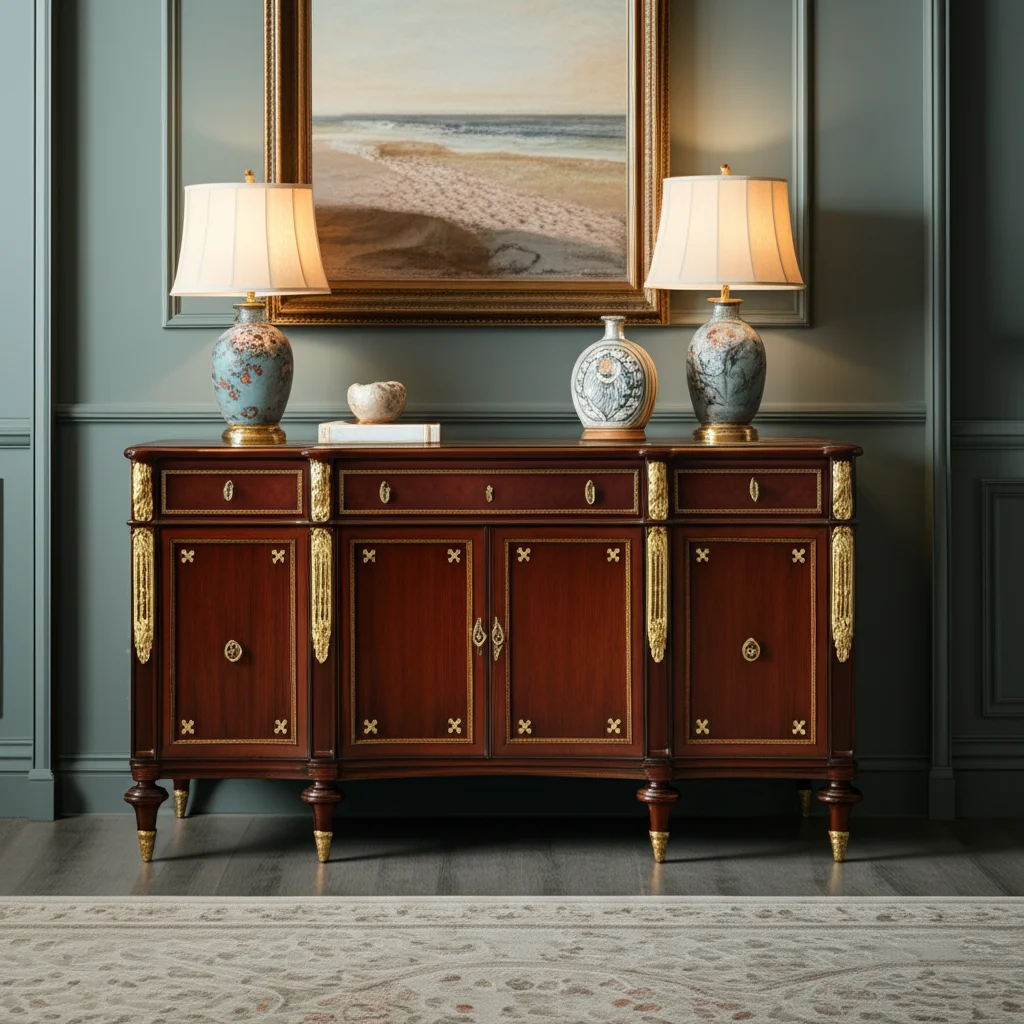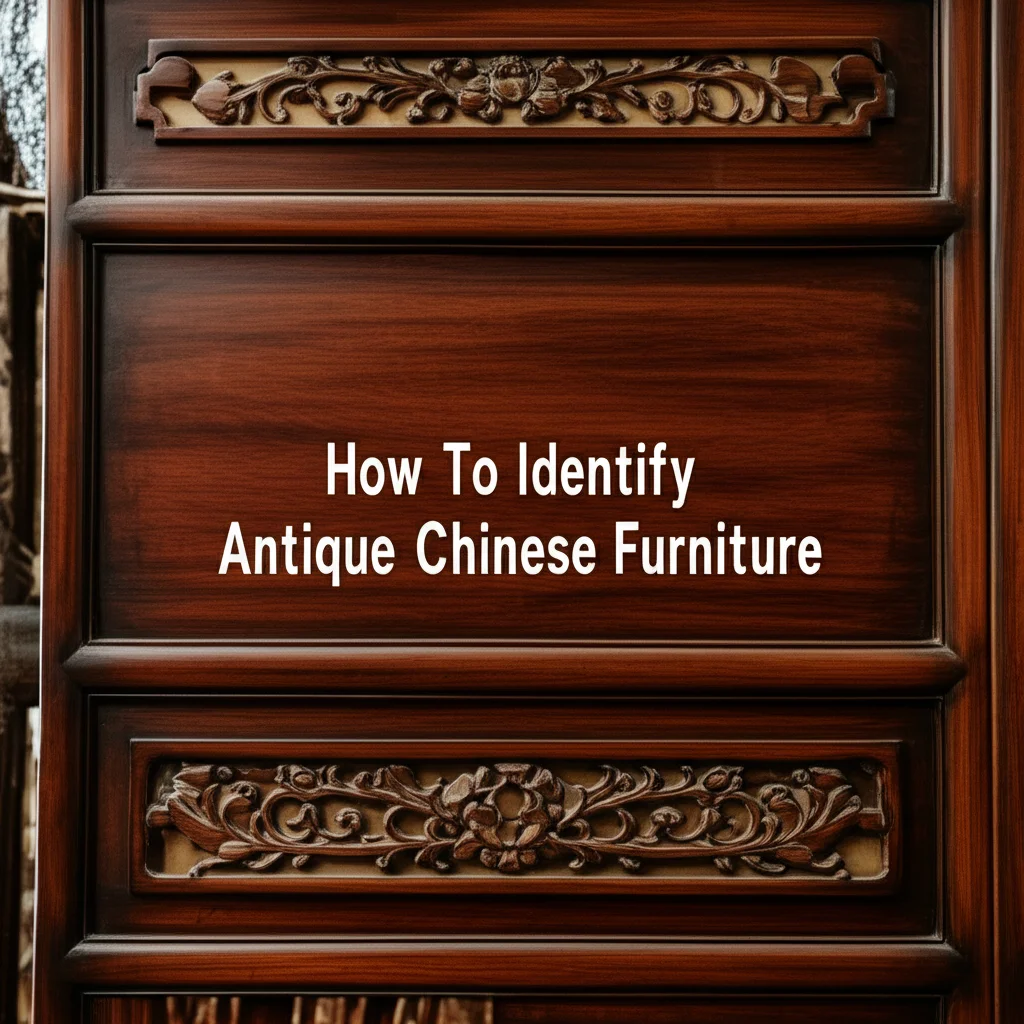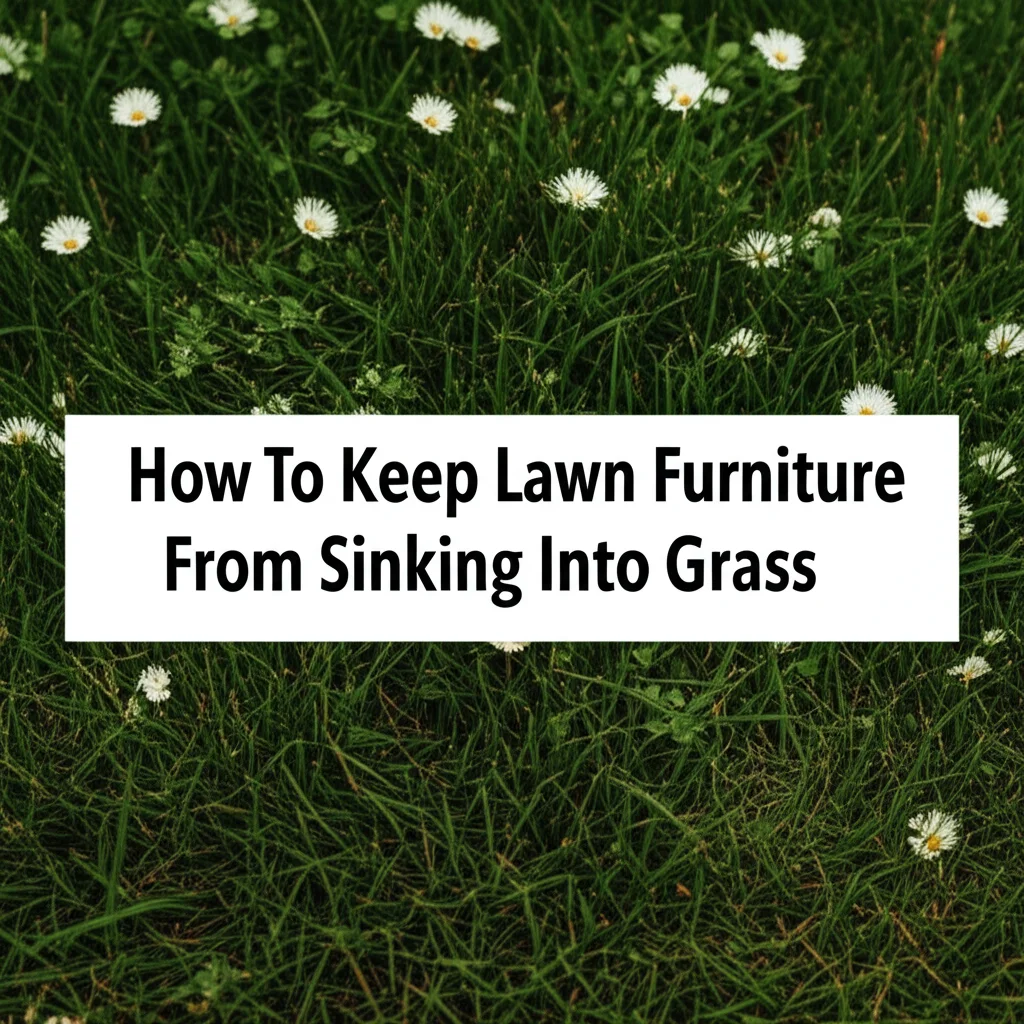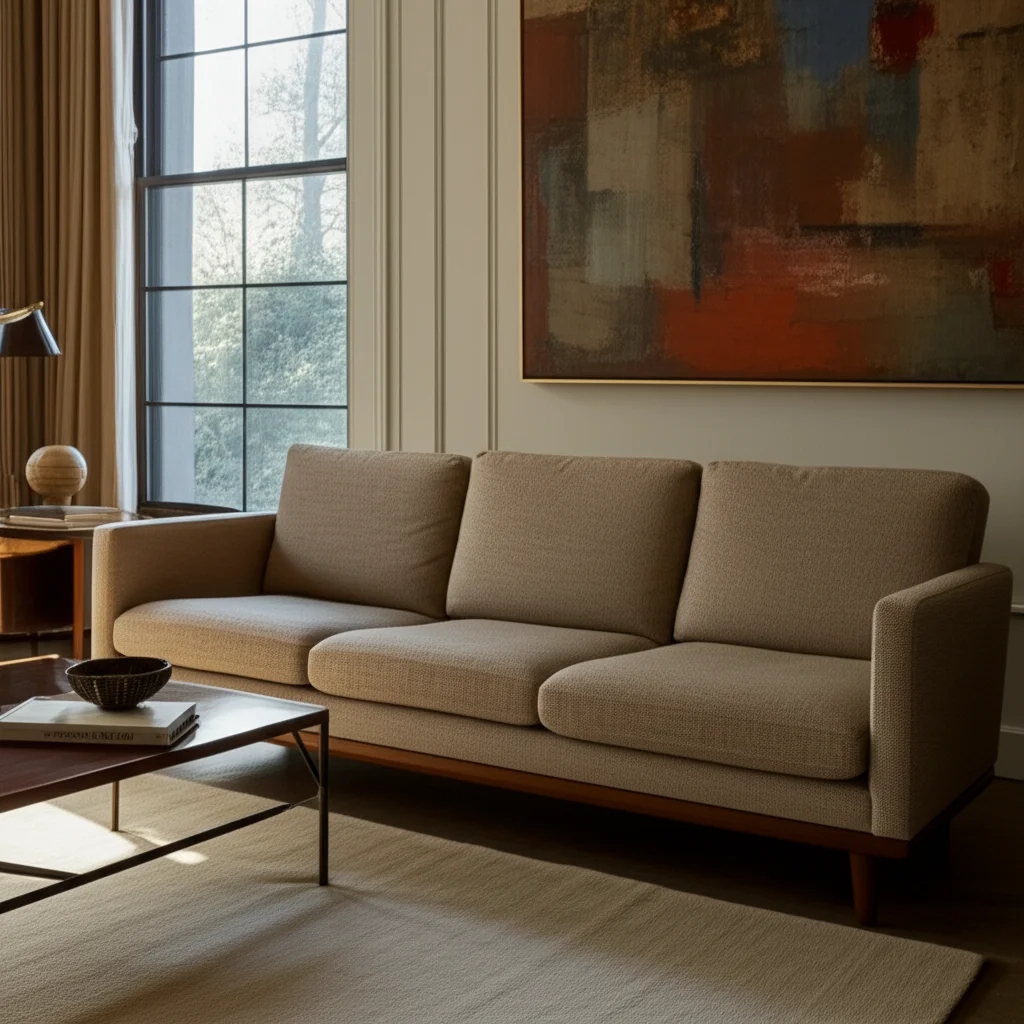· Todd Martin · Outdoor Furniture · 19 min read
How To Identify Brown Jordan Outdoor Furniture

How To Identify Brown Jordan Outdoor Furniture Easily
Do you own a piece of outdoor furniture and wonder if it is a Brown Jordan original? Many people find beautiful patio sets but are unsure about their true origins. Identifying Brown Jordan outdoor furniture helps you understand its value. It also confirms its quality craftsmanship. This guide provides clear steps to confirm authenticity. We explore maker’s marks, materials, and design elements. You will learn how to spot genuine Brown Jordan pieces. This information will help you whether you are a collector or a homeowner. Knowing your furniture’s brand adds to its story and appeal.
Takeaway
- Look for official Brown Jordan maker’s marks. These are often stamped or tagged.
- Examine the materials. Brown Jordan uses high-quality aluminum, wrought iron, and teak.
- Study the design. Brown Jordan styles are distinctive.
- Check construction details. Solid welds and smooth finishes are common.
- Research historical catalogs. This helps verify specific collections.
To identify Brown Jordan outdoor furniture, look for clear manufacturer marks, tags, or stamps usually found on the frame, underside, or cushions. Examine the materials for high-grade aluminum, wrought iron, or teak, noting superior construction quality like precise welds and durable finishes. Compare the furniture’s distinctive design elements to known Brown Jordan collections and verify its authenticity through official brand resources.
Understanding Brown Jordan’s Legacy and Quality
Brown Jordan has a rich history in outdoor furniture. The company started in 1945. It became known for its innovative designs. Brown Jordan furniture offers high-end products. These pieces combine style with durability. They are built to last. Many vintage pieces still look great today. This longevity is a hallmark of the brand.
The company uses excellent materials. They prioritize quality in every detail. This includes the frame, finish, and upholstery. Their commitment to superior construction sets them apart. Brown Jordan products are often more expensive than other brands. This cost reflects their high standards. Investing in Brown Jordan means owning a piece that endures.
Brown Jordan furniture often has a timeless appeal. Their designs blend classic and modern aesthetics. This makes them suitable for various outdoor spaces. From mid-century modern to more traditional styles, variety is a key feature. People often seek Brown Jordan for its reputation. They want furniture that combines luxury and function.
Recognizing a Brown Jordan piece means understanding its value. It is not just about a name. It is about a history of excellence. The furniture performs well in outdoor conditions. It withstands sun, rain, and wind. This durability is a major benefit. The brand’s legacy continues to influence outdoor living spaces.
Many collectors seek specific Brown Jordan lines. Some early designs are highly sought after. These pieces can increase in value over time. Learning about the brand’s history helps in identification. It gives context to the design and quality. I find that this background knowledge truly enhances appreciation for each piece.
Checking for Maker’s Marks and Labels on Brown Jordan Furniture
The most direct way to identify Brown Jordan outdoor furniture is by checking for maker’s marks. Brown Jordan consistently labels its products. These marks confirm authenticity. They are often found in specific locations on the furniture. Knowing where to look helps speed up the identification process.
Look for a stamped or engraved logo. This is common on metal frames. It might say “Brown Jordan” or “B. Jordan.” Sometimes, it includes a patent number or manufacturing date. Check the underside of chairs, tables, and lounges. The mark could be small and discreet. Use a flashlight if the area is dim or dirty.
Brown Jordan also uses adhesive labels or tags. These are often found on cushions or slings. They may be sewn into fabric parts. The tag might list model names or fabric details. Over time, these labels can wear off. Sun and weather can damage them. This makes the stamped marks more reliable for older pieces.
Inspect joints and connection points carefully. Sometimes, the mark is near a weld or bolt. For instance, a small stamp might appear on an aluminum leg. This indicates a quality check during manufacturing. A keen eye helps in finding these subtle details. I always check these areas first when identifying furniture.
The style of the mark can also provide clues. Older Brown Jordan pieces might have different logos. Researching historical Brown Jordan logos helps. Online databases or antique furniture guides show these variations. This historical knowledge helps date your furniture. It also confirms its period authenticity.
Sometimes, a mark might be covered by paint. If a piece has been repainted, the mark might be faint. Gently clean the area to reveal it. Do not use harsh chemicals. They can damage the finish. A simple damp cloth often works best to reveal hidden details. For more general advice, learning how to identify furniture manufacturer can also be very helpful.
Identifying Materials Used in Brown Jordan Outdoor Furniture
Brown Jordan is known for using specific high-quality materials. Recognizing these materials helps identify authentic pieces. Their choices reflect durability and aesthetic appeal. The main materials include aluminum, wrought iron, and occasionally teak. Each material has unique characteristics.
Aluminum is a primary material for Brown Jordan. They use heavy-gauge tubular aluminum. This material is lightweight yet strong. It resists rust, making it ideal for outdoor use. Many vintage Brown Jordan pieces are aluminum. You can often tell by lifting the furniture. It feels lighter than iron.
Wrought iron is another common material. It offers significant weight and strength. Wrought iron pieces are typically heavier than aluminum. They often feature intricate scrollwork or solid, robust frames. While durable, wrought iron can rust if not maintained. Brown Jordan’s finishes on wrought iron are usually very good. For more on specific metal types, checking how to identify vintage cast iron furniture might be useful.
Some Brown Jordan collections incorporate teak wood. Teak is a dense, oily hardwood. It naturally resists rot, decay, and insects. Teak weathers to a beautiful silvery-gray patina over time. If your outdoor furniture has wooden elements, examine the grain. High-quality teak has a tight, even grain. This material is a sign of luxury outdoor furniture.
Sling or strap materials are also distinctive. Brown Jordan uses durable vinyl straps or high-quality outdoor fabrics. These fabrics are resistant to UV rays and mildew. The straps are usually thick and well-tensioned. They do not sag easily. The quality of these secondary materials often matches the frame.
Always consider the overall feel. Brown Jordan furniture feels solid. There is no wobbling or creaking. The materials fit together seamlessly. They show careful attention to detail. This quality applies to all components. Even the screws and bolts feel sturdy and well-fitted.
Recognizing Signature Design Styles and Collections
Brown Jordan has produced many iconic collections. Each collection often has a unique design language. Familiarity with these styles greatly aids in identification. Many pieces reflect mid-century modern influences. Others show more traditional or contemporary lines. Knowing the common collections helps narrow down your search.
The “Kantos” collection features minimalist lines. It often uses flat aluminum bars. The design is sleek and understated. “Calcutta” pieces might have woven details. These are often crafted from aluminum or synthetic wickers. The weaving is usually tight and uniform. This reflects high craftsmanship standards.
“LeisureLite” is another recognizable series. It uses tubular aluminum frames. The chairs often feature vinyl strapping. The straps are usually wide and comfortable. This design became very popular in the mid-20th century. Its simplicity and durability made it a favorite. Many vintage pieces from this line are still in use.
“Campaign” or “Nomad” styles show a portable, foldable design. They often mimic safari or military furniture. These pieces feature X-frame legs. They might have canvas or sling seats. This style is quite distinctive for outdoor use. It speaks to a sense of adventure and easy rearrangement. For ideas on arranging furniture, see how to arrange outdoor furniture.
Look for consistency in design elements. Are the legs tapered or straight? Are there curved armrests? Does the frame have unique decorative motifs? Brown Jordan designers often incorporate subtle but distinctive features. These details are part of the brand’s identity. They help set it apart from imitators.
Online image searches are very helpful. Type “Brown Jordan [collection name]” into a search engine. Compare your furniture to known examples. Pay attention to the overall silhouette. Examine specific design quirks. These visual comparisons are powerful identification tools. This method often confirms a piece’s origin.
Assessing Construction and Craftsmanship of Brown Jordan Pieces
Brown Jordan’s reputation rests on its superior construction. The way a piece is built speaks volumes about its authenticity. True Brown Jordan furniture exhibits precise craftsmanship. Every joint, weld, and finish detail is of high quality. Understanding these aspects helps confirm a piece’s identity.
Examine the welds on metal frames. Brown Jordan uses smooth, continuous welds. There are no sloppy or uneven spots. The welds should blend seamlessly into the frame. They do not look like quick, cheap fixes. This indicates a high level of manufacturing precision. Poorly welded joints suggest a lower quality brand.
Check the finish applications. Brown Jordan’s powder coatings are uniform and durable. There are no drips, bubbles, or thin spots. The paint adheres perfectly to the metal. This finish protects the metal from elements. It also adds to the aesthetic appeal. A high-quality finish lasts for many years.
Look at how components fit together. Screws and bolts should be flush. There should be no gaps or misalignments. Moving parts, like recliners or swivel bases, operate smoothly. There is no sticking or creaking. This precision in assembly reflects the brand’s attention to detail. Every part works in harmony.
Cushions and slings are also important. Brown Jordan uses dense foam and durable fabrics. The stitching on cushions is neat and strong. It is often double-stitched for longevity. Slings are taut and securely fastened. They provide firm support. They do not sag excessively after use.
Test the furniture for stability. A genuine Brown Jordan piece feels solid. It does not wobble or creak when you sit on it. The weight distribution feels even. This stability comes from quality materials and robust construction. It ensures long-term comfort and safety. Inferior furniture often feels flimsy or unstable.
Even small hardware like glides or caps is high quality. They are typically made from durable plastic or metal. They fit snugly. They protect the furniture legs and your patio surface. Every element of a Brown Jordan piece is chosen for its quality and function. This comprehensive quality is a hallmark. If you ever need to perform repairs on any outdoor furniture, knowing how to fix outdoor furniture can be very beneficial.
The Importance of Patina and Wear in Identification
Patina and wear can offer significant clues about outdoor furniture. They tell a story about the piece’s age and use. For Brown Jordan, natural wear can actually help confirm authenticity. It shows how the quality materials age gracefully. This is different from the breakdown of lower-quality furniture.
Consider the material’s aging process. Aluminum frames might show minor scuffs or dulling. However, they will not show rust. The finish might be slightly faded from sun exposure. This fade is often even and consistent. It reflects the durable powder coating. A complete breakdown of the finish suggests a cheaper brand.
Wrought iron pieces will show different wear. If painted, the paint might chip or flake in some areas. Rust spots might appear where the paint is gone. However, the underlying iron remains strong. It does not easily bend or break. This indicates the strength of the material. Heavy rust all over might suggest a lower quality iron.
Teak wood develops a silver-gray patina. This is a natural aging process. The wood should remain smooth to the touch. It will not splinter or crack severely. This even patination confirms genuine teak. If the wood looks significantly degraded or rotten, it might not be high-quality teak. For specifics, learning how to clean outdoor teak furniture can show how it ages.
Vinyl straps and fabrics will show some stretching. They might have minor discoloration. However, they should generally remain intact. They should not be brittle or completely torn. The material quality prevents rapid deterioration. If the straps are completely disintegrated, they might be cheap replacements.
Look for areas of common contact. Armrests, seat edges, and footrests show more wear. This wear should be consistent with the material’s properties. For instance, a worn armrest on an aluminum piece might expose the metal beneath. This shows normal use. It does not indicate a defect.
The presence of a uniform patina often suggests true vintage. It is hard to fake years of outdoor exposure. This natural aging process enhances a piece’s character. It often increases its desirability for collectors. I appreciate how genuine wear patterns reveal a piece’s journey.
Researching Brown Jordan’s Historical Catalogs and Resources
Researching historical catalogs is a powerful identification method. Brown Jordan has a long history. Over the decades, they released many collections. Their old catalogs document these designs. These resources are invaluable for collectors and enthusiasts. They offer visual proof of specific models.
Start by searching online for “Brown Jordan vintage catalogs.” Many design archives host digital copies. Auction houses and antique dealers also share catalog images. These resources show product names, numbers, and features. They also display the various finishes and materials offered at the time.
Pay attention to model names. If your furniture has a tag, it might list a model name. You can then search for that specific name within the catalogs. This direct comparison is often the quickest way to confirm authenticity. It leaves little room for doubt.
Look at the year ranges for each collection. Brown Jordan introduced new lines regularly. Knowing the design period helps date your furniture. For example, a chair from the 1960s will reflect design trends of that era. This also helps you understand its historical context.
Join online forums or groups dedicated to vintage outdoor furniture. Many collectors share their knowledge. They post pictures of their own Brown Jordan pieces. They can often identify a piece from a single photo. Their collective experience is a great resource. People often share details about rare collections.
Visit vintage furniture stores or antique shops. Dealers specializing in mid-century modern furniture often know Brown Jordan. They can provide expert opinions. They might also have physical catalogs or reference books. Learning from these experts enhances your own identification skills.
Cross-reference information from multiple sources. Do not rely on just one image or description. Compare details across several catalogs or websites. This ensures accuracy. It helps avoid misidentification. This thorough research helps you confidently identify your Brown Jordan outdoor furniture.
Authenticating Vintage Brown Jordan Through Documentation
Beyond visual inspection, documentation can provide definitive proof. Original sales receipts, warranty cards, or even old advertisements can authenticate vintage Brown Jordan. These documents link a specific piece to its purchase history. This is particularly useful for rare or high-value items.
Look for any paperwork that came with the furniture. This might include an owner’s manual. It could be a care guide. Sometimes, these documents contain serial numbers. They might list model names or collection details. Even a faded price tag can offer clues about the original retailer.
Check family records or estate documents. If the furniture belonged to a relative, they might have kept sales records. Old photographs can also serve as documentation. A picture of the furniture in its original setting provides context. It helps confirm its age and provenance.
Contact a reputable appraiser specializing in mid-century modern furniture. Appraisers have access to exclusive databases. They can verify authenticity using their expertise. They might also provide an appraisal value. This service is valuable for insurance or resale purposes. An appraisal gives a professional opinion on the piece.
Search for old advertisements in magazines or newspapers. Brown Jordan frequently advertised in home decor publications. These ads showcase different collections. They often highlight key features and materials. Finding your piece in an old ad is strong evidence. It connects your furniture directly to the brand’s marketing.
Provenance is the history of ownership. A clear provenance enhances a piece’s authenticity. If you know the previous owners, gather their stories. Did they buy it new? Where did they buy it? This human element adds to the furniture’s story. It also helps with its historical validation.
Keep all identification details together. Take clear photos of marks, materials, and design elements. Note down any dimensions. Create a file for your research. This organized approach helps you build a strong case for authenticity. It also makes it easier to share information.
Common Pitfalls When Identifying Outdoor Furniture
Identifying furniture can be tricky. There are common mistakes people make. Being aware of these pitfalls helps you avoid misidentification. It ensures you arrive at an accurate conclusion. I have seen many instances where a simple oversight leads to confusion.
One major pitfall is mistaking a similar style for the brand. Many manufacturers copy popular designs. A chair might look like Brown Jordan. However, it lacks the true quality. Always look for the maker’s mark. Style alone is not enough for confirmation.
Another error is relying solely on material. While Brown Jordan uses specific materials, so do other brands. For example, many companies use aluminum or teak. It is the combination of material quality, construction, and design that matters. A single factor is rarely definitive.
Assuming all vintage outdoor furniture is high-end is also a mistake. Not all old pieces hold significant value. Some are simply old. They do not have the design or build quality of Brown Jordan. Age does not automatically equate to luxury. The true value lies in the brand and craftsmanship.
Neglecting to clean the piece before inspection is a common oversight. Dirt, grime, or old paint can hide crucial details. A simple cleaning can reveal a hidden mark. It can also show the true finish quality. Always give the furniture a thorough but gentle cleaning.
Misinterpreting wear and tear is another pitfall. Some damage is normal aging. Other damage points to poor quality or neglect. Distinguish between desirable patina and structural damage. A well-aged piece maintains its integrity. A cheap piece might fall apart.
Finally, not cross-referencing information leads to errors. Never rely on a single source. Verify details across multiple catalogs, websites, or expert opinions. This ensures accuracy. It builds confidence in your identification. Thorough research prevents incorrect conclusions.
Maintaining and Preserving Your Brown Jordan Investment
Once you identify your Brown Jordan outdoor furniture, proper care is vital. Brown Jordan pieces are investments. Good maintenance extends their life. It also preserves their aesthetic appeal and value. Regular care protects your valuable furniture from the elements.
Clean your outdoor furniture regularly. Use mild soap and water. A soft brush or cloth works well. This removes dirt, dust, and environmental buildup. Rinse thoroughly after cleaning. Proper cleaning prevents stains and corrosion. For detailed advice, learn how to clean outdoor furniture.
Protect metal frames from harsh weather. Reapply protective coatings as needed. Brown Jordan’s powder coats are durable. However, they benefit from occasional waxing. This adds an extra layer of protection. It helps prevent fading and chipping.
Care for teak wood furniture properly. Teak can be left to weather naturally to a silver-gray. Or, you can apply teak oil to maintain its golden color. Clean teak periodically to remove mildew. If you have teak pieces, refer to specific guides like how to restore outdoor wood furniture for best practices.
Store cushions and slings when not in use. This protects them from prolonged sun and rain exposure. UV rays can fade fabrics over time. Moisture can lead to mildew. Use outdoor storage boxes or covers. For seasonal storage, bringing cushions indoors is best. Learning how to store cushions for outdoor furniture is practical.
Use furniture covers during off-seasons. High-quality outdoor furniture covers offer excellent protection. They shield against dust, debris, and extreme temperatures. Ensure covers fit well and allow for air circulation. This prevents moisture buildup underneath.
Address any damage promptly. Small scratches or chips can lead to bigger problems. Touch up paint on metal frames. Tighten loose bolts. Early intervention prevents minor issues from worsening. This proactive approach saves on larger repair costs later.
Proper maintenance ensures your Brown Jordan furniture remains beautiful. It maintains its structural integrity. It continues to provide comfort for many years. This care preserves the investment you made in quality outdoor living.
Frequently Asked Questions
What is the primary indicator of Brown Jordan furniture?
The primary indicator for Brown Jordan furniture is often a distinct maker’s mark. This mark can be a stamp, tag, or engraved logo. You will typically find it on the frame, under the seat, or on a sewn-in label. It explicitly states “Brown Jordan” or a similar variation.
Do all Brown Jordan pieces have a visible mark?
Most Brown Jordan pieces, especially vintage ones, do have a mark. However, some older pieces might have faded or worn marks. Labels on fabric can also deteriorate over time. While a mark is ideal, its absence does not always mean a piece is not Brown Jordan if other factors strongly suggest it.
What materials does Brown Jordan commonly use?
Brown Jordan frequently uses high-quality aluminum for its lightweight and rust-resistant properties. They also utilize wrought iron for heavier, more intricate designs. Additionally, some collections feature durable teak wood or resilient vinyl straps and outdoor fabrics known for their longevity.
How can I tell if the construction quality is Brown Jordan?
Brown Jordan furniture shows superior construction. Look for smooth, continuous welds on metal frames without gaps. Finishes should be uniform and durable. All components, including cushions and hardware, should fit perfectly. The furniture should feel sturdy with no wobbling or creaking.
Can a piece be Brown Jordan if it looks old and worn?
Yes, a piece can definitely be Brown Jordan even if it looks old. Brown Jordan furniture is built for durability. High-quality materials like aluminum and teak age gracefully, developing a patina. Minor wear, fading, or even some surface rust on iron is normal for vintage pieces and often indicates authenticity.
Where can I find historical information about Brown Jordan collections?
You can find historical information on Brown Jordan by searching online archives of design catalogs. Websites of vintage furniture dealers and auction houses often feature old advertisements or collection details. Joining online forums for vintage outdoor furniture enthusiasts can also provide valuable insights and resources.
Conclusion
Identifying Brown Jordan outdoor furniture involves a multi-faceted approach. You now know to begin by seeking those crucial maker’s marks. These stamps or tags are often the clearest sign of authenticity. Understanding the quality of materials used, such as aluminum, wrought iron, and teak, provides strong clues. Brown Jordan’s commitment to superior craftsmanship is evident in every weld and finish.
Recognizing specific design styles and collections is also key. Brown Jordan pieces have a distinct aesthetic that blends timeless elegance with modern function. By researching historical catalogs and documentation, you can confirm your findings. This process helps ensure you have a genuine piece of this iconic brand.
Proper identification lets you appreciate your furniture’s true value. It ensures you know how to care for your investment. Brown Jordan outdoor furniture offers enduring quality and style. My hope is that this guide helps you confidently identify these exceptional pieces. Enjoy your beautiful, authentic Brown Jordan furniture for many years.





